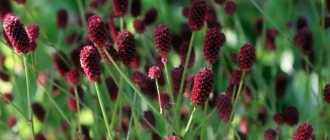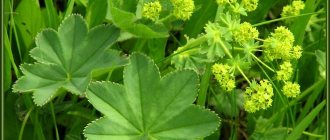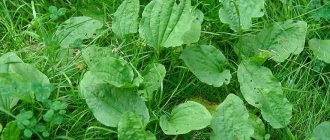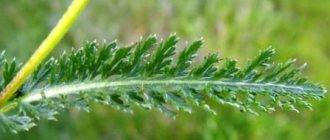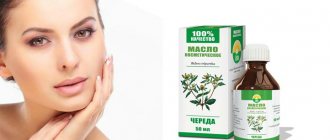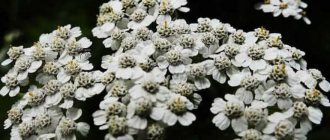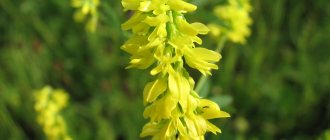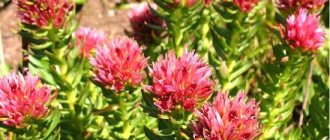Many medicinal plants are recognized as official medicine. After all, some crops have healing properties and help prevent and cure (as part of complex therapy) common and rare diseases. And there are medicinal herbs that, due to their taste and aromatic qualities, have earned their place not only in folk, official medicine, but have also gained popularity in the culinary field! Thyme is considered one of these plants. Many people are familiar with the fragrant aroma of this plant. But does everyone know that thyme has medicinal properties? This plant has many positive qualities. We will talk about the properties and characteristics of thyme in this article.
origin of name
The name of the plant, to which we are accustomed as a drug: “thyme”, due to long ago, has lost its history of origin. The second popular name for the herb: “thyme” is associated with the arrival of a long-known plant from the southern countries of Europe along with traders. The miraculous spice was added to dishes to give strength, vigor and health. The seasoning took root with a name derived from the Greek word: “thymos” - bravery, courage, fortitude.
Thyme and thyme are two names for the same plant.
How to make cough syrup from thyme?
Thyme cough syrup is no worse, and maybe even better, than the synthetic medicines that we are all used to using, because the syrup is prepared from natural ingredients.
- Recipe 1. A small bunch of still blooming thyme should be washed well, finely chopped and allowed to dry. Then the raw material needs to be poured with about 450 ml of water and simmered over low heat, the water should boil by half. The broth should be allowed to cool, then strain it, add about 50 g of garlic (squeeze out the juice) and 300 g of natural honey. Mix everything and store in a tightly sealed container. You need to take the medicine after meals, 1 teaspoon per day. This syrup can be stored for a very long time.
- Recipe 2. Finely chop 20 g of dry thyme, pour in about 200 ml of hot water, cook over low heat in a closed saucepan until the water boils by half. Dissolve 200 g of honey in a water bath and add it to the decoction. The syrup turns out very tasty. Children can be given this medicine after meals, 1 teaspoon.
- Recipe 3. Flowering thyme must be cut and placed in a glass jar in layers, alternating thyme with sugar, pressed down and left in a dark place for two weeks. Then the syrup is poured into another jar and covered tightly with a lid. Add the product to tea if you have stomach problems.
Types of thyme
Thyme (Creeping)
Wild thyme is found throughout Eurasia. An evergreen herbaceous shrub grows in fields, meadows, along roads, at the foot of mountains, and near ponds. Dry soil does not harm the plant, as the roots go deep into the ground in search of moisture. There are more than two hundred varieties of grass. All representatives belong to the group of valuable essential oil plants. The most common and studied include several species.
- Creeping thyme (thyme). It has pronounced medicinal properties, is used in medicine, and is part of medications. Refers to honey plants.
- Common thyme. It grows in the north-west of the Mediterranean, in the south of France and Spain, in Russia it is cultivated in the Krasnodar region. Used in the manufacture of medicines.
- Lemon thyme. It has a characteristic citrus scent. Used in medicine, as a source of essential oil and in the food industry.
- Hill thyme. It grows on the dry mountain slopes of Transcaucasia. Widely used in the cosmetics and food industries.
- Thyme Callier. Found on the Crimean Peninsula, it is a honey plant and has food value.
- Early thyme. An ornamental plant that grows in Europe and the Caucasus.
- Thyme Kochi. Used as a medicinal plant and spice. Found in the Caucasus and the Middle East.
- Marshall Thyme. Covers the territory of the Caucasus, Western Siberia, Kazakhstan, and the European part of Russia. Grows in steppes, meadows, foothills.
- Mountain thyme (flea thyme). An herb grown in the ecologically clean mountain regions of Altai and the Caucasus and collected by hand. Used in pharmacotherapy.
Creeping thyme (ground cover) is widely used in landscape design due to its abundant flowering. This species is familiar to everyone as ordinary thyme.
Photo of the plant
The plant looks like a wild flower. Small blue, lilac or light blue flowers make it stand out against the background of the rest of the grass at the edge. Photo for reference.
Thyme (thyme) has long been a favorite plant among people. It can be found in many places, so people collect it themselves to make medicines and culinary additives. Look at the photo before collecting so as not to be mistaken.
Composition of thyme
The beneficial properties of the plant are due to its rich composition.
| Vitamins | Content in mg | Minerals | Content in mg |
| A | 190-195 mcg | Potassium | 813-815 mg |
| IN 1 | 0.515 mg | Calcium | 1890 mg |
| AT 2 | 0.3-0.6 mg | Sodium | 55 mg |
| AT 4 | 43.5-43.8 mg | Magnesium | 222 mg |
| AT 6 | 0.54-0.56 mg | Phosphorus | 202 mg |
| AT 9 | 276 mcg | Iron | 125 mg |
| WITH | 50-52 mg | Manganese | 8.0 mg |
| E | 7.5 mg | Copper | 860 mcg |
| TO | 1714.5 mcg | Selenium | 4.5 mcg |
| PP | 4.95 mg | Zinc | 6.3 mg |
In addition to vitamins and microelements, thyme contains essential oil, which contains:
- Thymol. A powerful antiseptic with bactericidal properties.
- Carvacrol. Cleanses the intestinal microflora from harmful bacteria.
Thanks to these substances, thyme has a specific aroma and taste.
The herb contains flavonoid pigments, tannins, hepatoprotector - oleanolic acid, ursolic acid.
Care
Thyme is grown not only for medicinal purposes, but also for decorative purposes. However, to grow in the garden, you must follow some rules for caring for thyme. In this way, the beneficial properties and decorative appearance of the plant are preserved.
Illumination
Thyme is grown in sunny places. However, the growth characteristics of the shrub make it possible to plant thyme in semi-shaded places. When growing in the garden, you should pay attention to where the plant is planted. You should not plant shrubs in constant direct sunlight, as burns may form on the foliage.
Temperature
The plant easily tolerates different growing temperatures. Thyme grows easily in both temperate climates and cooler and hotter climates. An important condition for decorative growing of thyme is maintaining an optimal temperature regime of 20-25 degrees. In such conditions, plants retain their properties for a long time, and the decorative effect of the flower does not disappear for more than a month.
Air humidity
Thyme is unpretentious to grow, so it can withstand any air humidity. However, in order for the shrub to bloom for a long time, you should not exaggerate with moisture. If the plant remains in high humidity for a long time, rot or mold may form on the leaves. Which will spoil the appearance and beneficial properties of the flower.
Watering
When growing thyme in garden conditions, a moderate regime of watering the plant should be observed. A moderate amount of moisture in the soil promotes long-term flowering and keeps the plant in a healthy state. It is important to understand that stagnation of water in the soil can lead to the development of various diseases. Therefore, the soil under the thyme must have a good drainage layer. The optimal frequency of watering shrubs is 2-3 times a week. From the moment of flowering, watering becomes more frequent up to 4-5 times a week.
Fertilizer
Since thyme is a perennial plant, the soil under the bush is gradually depleted. If there is insufficient nutrient content in the soil, the bush becomes lethargic and may die. To optimally support the life of thyme, organic and mineral fertilizers are regularly added to the soil. Horn flour or mulch is suitable as a top dressing.
soil mixture
To grow thyme in the garden, it is worth paying attention to the soil mixture in which the plant is located. The soil should not contain an acidic environment. Because it is harmful to thyme. The soil mixture should contain the optimal amount of drainage, be light and nutritious. In addition, the soil must contain a layer of peat and sand.
Transfer
As the soil depletes and the bush grows, the bush has to be replanted to a new location. When replanting, you must carefully dig up the rhizome and move the shrub to a new place along with the soil remaining on the roots. When replanting, it is important to understand that the shrub should be planted in a place that is similar in soil mixture to the previous one. Thus, the bush will begin to grow faster.
Bloom
Flowering occurs in July or August. Thyme blooms with bright small flowers. Some varieties bloom with a large number of buds, which almost completely cover the foliage. Depending on weather conditions and the level of nutrients in the soil, as well as compliance with plant care rules. The shrub can bloom from two weeks to one and a half months. Depending on the plant variety and its variety, thyme blooms in different shades of inflorescences - red, pink, purple or white.
Trimming
Thyme should be pruned regularly. The plant is shortened by 2/3 of its length in the fall, after the formation and ripening of the fruits, and also in the spring, before the foliage begins to appear. Autumn pruning is necessary to prepare the plant for winter. In the spring I prune the bushes to maintain their decorative appearance.
Thyme and thyme find out what the difference is
Thyme and thyme: what is the difference between the same plant of the Yamaceae family, let’s take a closer look.
- Name;
- Application area;
- Place of growth.
It is generally accepted that thyme grows in Mediterranean countries. It has several varieties. Only one species is called thyme: “Thymus serpyllum” - creeping thyme (GOCT 21816-89).
The most common, less demanding and accessible grass grows in the steppe zone and on sandy soils. This species is mainly used in medicine due to its high content of essential oils (0.1-0.6%), as well as tannins and bitter substances.
Reproduction
If breeding is necessary, thyme can be propagated in several ways. In the natural environment, thyme reproduces using seeds. While in decorative use the method of dividing the bush or cuttings is more often used.
Seed propagation
Sowing is a simple way to obtain a new plant, since the shrub takes root easily and grows quickly. At the same time, thyme seeds can be collected from an adult bush or purchased in specialized stores.
You may be interested in: Yarrow - variety of species, methods of growing and using a medicinal plant
Sowing can be done in open ground and in containers to obtain seedlings. Depending on the sowing method, planting is carried out in spring or autumn.
Sowing in open ground is carried out in the fall, when constant warmth is maintained and there is no frost. At the same time, the seeds are evenly distributed over the soil surface. In the first days after sowing, it is preferable to cover the planting site with covering material. Sowing is carried out in a mixture of sand and peat. After planting, the plants are provided with regular watering and weed removal.
When growing seedlings, sowing in containers is carried out in the spring, at the end of March or beginning of April. When sowing, thyme is distributed over the surface of the soil mixture, after watering the ground with water. After planting the plants, the containers are covered with film and placed in a warm, sunny place until shoots emerge. After the appearance of three or more permanent leaves and with the onset of constant warmth, the plants are planted in a permanent habitat.
Dividing the bush
Dividing the bush is the best option when you need to get one daughter plant. An adult plant is used as a mother plant. Breeding is carried out in the spring, before a large amount of foliage forms. At the same time, the mother plant is dug out of the ground and carefully distributed into equal parts. The resulting parts are planted in a permanent habitat.
Cuttings
Thyme can also be propagated using cuttings. This method can be used at any time of the year. When does the bush grow? To do this, a branch with several shoots is cut from an adult and the cutting is placed in moist soil. To improve the growing season, cover the cuttings with a cut plastic bottle or jar. After new leaves appear on the branch, the plant can be planted in a permanent habitat.
Where is it used?
In official medicine
Thyme, whose medicinal properties are well known, is part of multicomponent preparations. Medicines are available in the form:
- Balzamov (“Mother See”);
- syrups (Pertussin, Passifit);
- extracts (Phytogalenika);
- elixirs (Codellac Broncho, Codellac Phyto).
Chopped grass is produced in the form of filter bags and loose raw materials in packages. Thyme is also included in herbal preparations.
In folk medicine
The medicinal properties of thyme have been used since ancient times to combat
with diseases of different etymologies.
- Ingestion. At home, healing decoctions, teas, and infusions are prepared from fresh herbs or prepared raw materials. Taken to strengthen the immune system, prevent and treat internal organs.
- External use. Compresses and lotions from the decoction are applied to inflamed and affected areas of the skin. For bruises, muscle and joint pain, take baths and rubbing with alcohol tincture. The herbal decoction is used to rinse the mouth and throat for inflammation.
In scientific research
The biological activity of thyme essential oils is being studied by scientists from different countries. The Portuguese Center for Animal and Veterinary Sciences concluded that thyme oil is a natural preservative. This is evidenced by its ability to inhibit the growth of bacteria, which spoil food and cause food poisoning.
Doctors from Poland combined thyme with another antiseptic - lavender. A mixture of essential oils effectively fights staphylococcus, enterococcus, Escherichia coli and Pseudomonas aeruginosa.
Pharmaceutical science considers the plant as a promising source of herbal medicines.
In dietetics
The herb improves the functioning of the gastrointestinal tract and stimulates lipid metabolism. The spice is added to high-calorie dishes for quick digestion.
A decoction and infusion of thyme has a diuretic property, reduces swelling, removes toxins, and reduces weight.
Tea drunk before meals reduces appetite and improves digestion. Taking a vitamin decoction is included in comprehensive weight loss programs.
In cooking
European countries have long added thyme to food and drinks. The dish became aromatic, acquired a pleasant taste and had healing and strengthening properties. The use of thyme in cooking has taken root in other countries. Only fragrant varieties of thyme are used as a seasoning:
- citric;
- ordinary (cumin);
- creeping.
Each seasoning is added to taste in fish, meat dishes, baked goods and desserts.
The herb goes well with basil, rosemary, sage, peppermint, marjoram, and oregano. Thyme, as a spice, is an essential component in the Herbes de Provence seasoning.
In cosmetology
Essential oil effectively smoothes wrinkles. To do this, add 1-2 drops to a portion of the nourishing cream and apply to the face before bed. Nail baths with the addition of 3-4 drops strengthen and improve their color.
Masks prepared with the addition of oil moisturize and nourish the hair and scalp. The easiest way to care for your body and hair is to add a few drops to your shampoo, shower gel, or body milk.
Rinsing with a decoction of thyme relieves dandruff from the skin. The herb is included in hair care products.
Conclusion
Thyme, also known as thyme, is a fragrant herb that has medicinal properties. In medicine, thyme is recommended as part of the complex treatment of diseases of the respiratory system, kidneys, gynecological problems, disorders of the heart and liver.
Infusion, tea or decoction of thyme improves health if the recommended dosages are followed. Ignoring medical recommendations can provoke allergic reactions and dysfunction of internal organs.
Author of the article:
Sokolova Nina Vladimirovna |
Herbalist Education: Diploma in General Medicine and Therapy received from the University named after N.I. Pirogov (2005 and 2006). Advanced training at the Department of Herbal Medicine at the Moscow People's Friendship University (2008). Our authors
Useful properties of thyme
Thanks to its rich composition, thyme has beneficial properties.
- Antiseptic and disinfectant. Thymol essential oil is included in antibacterial lozenges, which are prescribed for inflammation of the mouth and nasopharynx. The herbal decoction is drunk for gastrointestinal upset;
- Expectorant and antispasmodic. Relieves coughing attacks in bronchopulmonary diseases;
- Antiparasitic. In complex therapy, it accelerates the process of removing helminths from the body;
- Diuretic. Relieves inflammation in the kidneys, bladder, urinary tract;
- Sedative and sedative. Calms the nervous system, relieves irritability;
- Immunomodelling. The rich vitamin and mineral composition strengthens the immune system and serves as a natural preventative against viral diseases.
The beneficial properties of thyme are based on its ability to:
- reduce inflammation;
- fight germs.
- strengthen immunity;
- increase vitality.
Thyme was used by the nobles of ancient Rome for bathing. The bath energized the body and soul.
Benefits for men
The benefits of thyme for men include the content of zinc and selenium in the herb. Even in small quantities in the composition, they stimulate the production of testosterone, improve the quality of seminal fluid, prevent premature ejaculation, and eliminate erectile dysfunction. Effective in the complex treatment of inflammation of the prostate gland.
Thyme tea helps cope with psycho-emotional disorders and will help eliminate:
- sensitivity to stress;
- insomnia;
- chronic fatigue;
- depression;
- headache;
- apathy.
Benefits for women
Thyme seasoning, tea and decoctions are the prevention of gynecological diseases in women. When inflammatory processes of the genitourinary system occur, thyme is included in the diet. In addition to relieving inflammation, it will calm the nervous system and normalize sleep.
According to ancient legends, thyme bewitches men. In this case, not only drinks and spices are used, but also the smell of grass. You can use a linen bag with dry grass.
A sachet with fragrant herb is used for chronic insomnia or prolonged stress, placing it next to the pillow.
Benefits for children
Thyme is not recommended for children under three years of age due to the essential oils it contains. Unlike adults, children's doses of the decoction are smaller and have a low concentration. For children, thyme is useful for strengthening the immune system, improving sleep, treating skin rashes and colds.
Thyme is contained in small quantities in baby tea with lemon balm and fennel, which is suitable for babies aged five months and older.
What herbs goes well with thyme?
Traditional medicine experts recommend combining thyme with other medicinal herbs:
- Rosemary - activates the analgesic, antifungal and antibacterial effects of thyme. This combination is recommended for men to treat impotence.
- Ivan tea or fireweed - enhances the sedative effect, complements the anticonvulsant properties of thyme.
- Sage - promotes a more pronounced expectorant, anti-inflammatory effect.
- Chamomile - indicated in combination with thyme in the treatment of colds, flu, and diseases of the male urological area.
- Oregano - in combination with thyme, is indicated for the treatment of gynecological disorders, infertility, thrush, cystitis. Effective in the treatment of bronchopulmonary diseases, whooping cough.
- Mint - enhances the antifungal and antioxidant properties of thyme. The combination of herbs helps alleviate the symptoms of hypertension, diseases of the cardiovascular system, and ophthalmological disorders.
[Video] What is the difference between oregano, thyme, oregano, thyme and marjoram?
Contraindications for use
Thyme has not only medicinal properties, but also contraindications. It is not recommended to use the herb for people with diseases:
- gastrointestinal tract;
- liver and kidneys;
- heart and blood vessels;
- allergies.
Do not use during pregnancy and lactation. Thyme has contraindications for people with highly developed hypertension. Thyme is contraindicated for atrial fibrillation, bronchial asthma and tuberculosis.
An overdose of essential oil leads to hyperfunction of the thyroid gland.
Diseases and pests
The chemical composition of thyme helps prevent the development of diseases and pests on the plant. However, if the crop is not properly cared for, thyme can be damaged by pests such as:
- Meadow moth - when affected by this type of pest, the surface of the foliage becomes covered with cobwebs. At the same time, the caterpillars gnaw the inner surface of the leaf plate. You can get rid of the pest using Decis. To prevent the appearance of caterpillars, you should regularly remove weeds around the plant.
- The sand borer is a beetle that damages the stems and roots of plants. To eliminate the slugger, it is necessary to make baits filled with pesticides;
- Aphids, a pest, suck the juice from the young leaves and stems of the plant. It can be eliminated using fungicidal solutions;
- Weevil - this type of pest lays larvae on flowers. The pest can be eliminated using pesticides that are harmless to humans.
Improper care and poor watering cause diseases to develop on thyme. Thus, shrubs are often damaged by pathologies such as fungal infections, mold or rot. When watering is normalized, the plant quickly returns to normal.
Folk recipes
Infusions and decoctions are prepared to treat diseases of the respiratory tract and internal organs. They are used for rinsing, inhalation, and medicinal baths.
Thyme tea
Tea from thyme flowers
Tea with thyme can be bought ready-made. Making tea according to the author's recipe will bring more pleasure.
For preparation, you can use a glass teapot (500 ml) with a convenient glass flask. Dry grass is poured up to half the flask. To get “Vitamin tea” you can add a couple of rose hips or hawthorn berries. Hot water (90-95°C) is poured into the flask. Since a glass teapot easily releases temperature, it should be covered with a terry towel and left for 15 minutes. For prevention, one cup per day, diluted 1:1 with hot boiled water, is enough. You can add 1 tsp to warm tea. honey Helps with complex treatment of respiratory organs, hypertension in the early stages, strengthens the immune system.
Children's tea for immunity
1 tsp. raw materials are brewed in 250 mg of boiled water, heated in a water bath for 10 minutes. The resulting broth is filtered and diluted with boiled water 1:1. The norm for children aged 3-4 years is up to a third of a glass per day.
Infusion
The infusion is not boiled over fire. It is prepared like tea, only in greater concentration, without additives and infused longer.
2 tbsp. dry herbs, pour 500 ml of boiling water (90-95°C) and leave for two hours. Then strain and take 1/3 cup as needed. The infusion should be stored in the refrigerator. You can gargle with a warm infusion for inflammation, make lotions and compresses on bruised areas.
Infusion for male power
2 tbsp. dry herbs, pour 100 ml of boiling water, leave for two hours. Then filter and take 50 ml twice a day before meals.
Baths for children
Thyme infusion is added to the bath for children who sleep restlessly. Take 200 g of dry grass, pour 2 liters of boiling water, leave for 2-3 hours. Take a bath for 15 minutes once every 2 days. For a baby bath, 10-20 ml of infusion is enough.
Baths for adults
Taken for muscle pain, arthrosis, rheumatism, neuralgia. Helps with nervous disorders and insomnia. The infusion is prepared according to the recipe given above. Take a warm bath for 15 minutes. once every two days.
Decoction
Decoctions are prepared only in a water bath. To prevent essential oils from evaporating, the boiling time should not exceed 15 minutes.
2 tbsp. l. The herbs are placed in an enamel bowl and 500 ml of cold water is added. Boil in a water bath for 15 minutes, filter. The decoction is suitable for inhalation with warm steam.
Decoction for nervous disorders and insomnia
Brew 15 g of dry crushed raw materials with 200 ml of boiling water, leave in a water bath for 10 minutes, then strain. Take 2 tbsp. l. morning and afternoon. Two hours before bedtime, drink ¼ glass.
Alcohol tincture
In a simple and convenient way, you can prepare a tincture that is suitable not only for internal but also external use.
To prepare you will need:
- dry or fresh thyme: 40-50 g;
- alcohol diluted 1:1 or vodka: 150 ml.
Coarsely chopped herb is poured into a glass bottle, then filled with vodka. Leave to infuse for 1.5 weeks. After infusion, filter and store in the refrigerator. It is used internally only for the prevention of diseases in moderate quantities. If the disease appears, use is not recommended.
How to make tea with thyme?
Want to use thyme to improve your health? There is nothing simpler - prepare tea from fresh whole or crushed leaves, dry raw materials. It is better to strain the finished drink so that parts of the leaves do not fall into the cup.
If you have fresh thyme, place a few sprigs in a glass or teapot and cover with boiling water. Leave for up to 10 minutes. If desired, you can strain the finished drink so that the leaves do not fall into the cup.
If you have ground thyme, take 1 teaspoon of the raw material, pour a glass of boiling water, mix well. After 10-15 minutes the drink is ready.
[Video] Tea with thyme (removing mucus from the lungs after a cold):
To treat colds, thyme can be combined with other herbs. In addition, thyme tea itself is very tasty and has a wonderful aroma.
- Recipe 1. Pour 1 teaspoon of thyme into a quarter glass of water, bring to a boil and let it brew for 10 minutes. You can pour boiling water right away. After steeping, the tea should be strained.
- Recipe 2. Three spoons of black tea and two spoons of thyme should be placed in a teapot, pour boiling water and leave for 2 minutes.
- Recipe 3. Pour a glass of boiling water over a mixture of lingonberries, St. John's wort and thyme (ratio 1:1:1) and let it brew for 15 minutes.
Correct preparation
To preserve the valuable and beneficial properties of the herb, it is important to properly prepare raw materials, from which drugs for treatment will later be prepared.
Growing conditions
Places where thyme grows in nature do not require maintenance or additional costs. However, they may be located far from populated areas. In this case, collecting grass is difficult.
You can grow thyme in your own garden or vegetable garden. For planting, choose a sunny place, sheltered from drafts. The soil should drain well and be neutral. If the soil is clayey or very wet, sand should be added. In order to prevent acidification, the soil is mixed with chalk or lime.
Collection
The grass should be collected during the flowering period. It is recommended to choose places to collect wild thyme away from roads and industrial enterprises. Using a knife or scissors, cut off the upper part of the plant with inflorescences. In the south, you can harvest grass as early as May. In the northern regions the plant blooms by August.
Drying
The collected grass is cut with scissors. Dry in a room with good ventilation. In this case, raw materials should be protected from direct sunlight. Color and healing properties are well preserved when dried in dark places. The decomposed grass is periodically turned up. At the end of drying, when turning, a crunch appears and the leaves fall off.
How to collect, how to dry?
Thyme begins to be collected between flowering and seed formation, which corresponds to the calendar period from June to August.
If you want to collect thyme for the first time, use the recommendations of professionals:
- Cut the stems along with the concrete at a level of 3-4 cm from the soil level.
- Choose stems with a lot of flowers.
- Avoid plants that show visible signs of insect damage.
- Spread the herbal raw materials in a loose, thin layer on a prepared, clean surface.
- The drying process should take place under natural conditions, outdoors in the shade or in a ventilated area.
- Dried stems should crumble easily when squeezed.
[Video] Collecting thyme:
Storage
Freshly picked thyme is stored in the refrigerator. The leaves begin to change color as the collected grass ages. To preserve its valuable properties, thyme is frozen and later used as a spice in first courses and when stewing meat. Dried raw thyme is stored for a year at room conditions. After 12 months, the grass loses its fragrant aroma.
Pharmaceutical preparations of thyme in capsules contain ground leaves. They are stored at room temperature and taken 250-500 mg per day.
Thyme essential oil can be found in pharmacies. It is produced in dark glass bottles. Essential oil is stored in a dry, cool place or in the refrigerator, protected from direct sunlight.
Contraindications and possible harm to spices
When not to use thyme:
- with gastritis with high acidity;
- stomach or duodenal ulcer;
- colitis, enterocolitis;
- heart failure;
- children under 12 years old;
- if you are allergic to thyme.
Possible side effects of herbs and flowers are allergic reactions in the form of rash, itching, local redness.
With prolonged or heavy use of thyme in any form, it can cause a semblance of menstruation in women. In fact, it will be bleeding, not menstruation. Thyme herb suppresses the thyroid gland.
Choosing a growing location and soil
Thyme, like any plant, has certain growing requirements that must be met to ensure its best development. In the garden this should be a place:
- sunny, bright;
- warm;
- protected from the wind.
Ideally, the sun should shine on the plant for at least half a day. In addition to light, the plant needs a lot of heat. Therefore, it readily grows near walls and stones, which heat up and then return solar energy.
Attention! It is better to choose a higher place for growing thyme. This plant does not like soaking. It is important that plants, especially young ones, are not flooded in the spring. Especially early varieties that lie on the ground like moss.
The soil for growing thyme should be:
- fertile;
- air;
- rich in calcium;
- rich in humus and essential nutrients;
- permeable, preferably sandy;
- well loosened;
- warm.
The plant will also cope with weaker soils.
A limestone substrate is excellent for growing thyme. The soil intended for planting should not be acidic (if necessary, liming may be required before planting) and should not be too wet or too dry, in such areas the plants will grow very poorly or die.
The plant suffers greatly from weeds; it is most vulnerable at the very beginning of cultivation, when young seedlings have not yet had time to take root and branch well. Therefore, before planting thyme, the area should first be thoroughly cleared of weeds and dug deep.
Good predecessors for thyme (cultures after which it is better to plant):
- roots;
- vegetables;
- rape;
- green legumes.
Despite the fact that thyme does not have high nutritional requirements, before cultivating it, mineral fertilizers can be added to the soil in an amount of approximately 400-500 g/area P₂O5, 500-600 g/area K2O (before planting on a plantation) and 400-600 g/acre N in two doses before planting and for fertilizing.
Thyme in a pot on a windowsill in an apartment should also be grown on fairly fertile soil and preferably placed on a southern windowsill. From May you can take it outside, making sure that it does not freeze.
